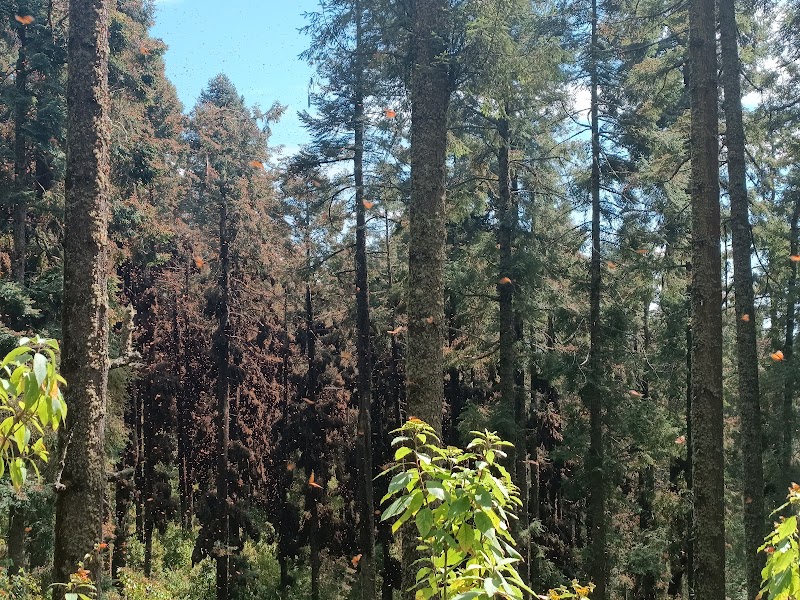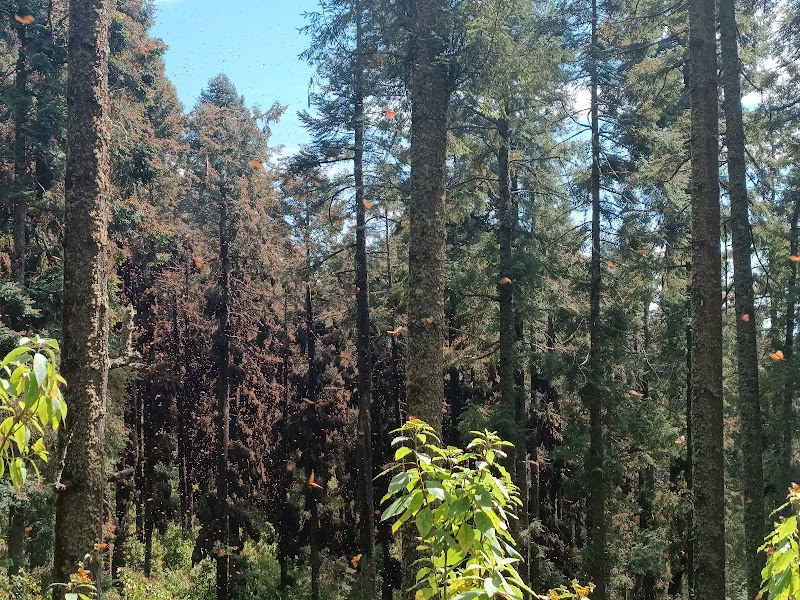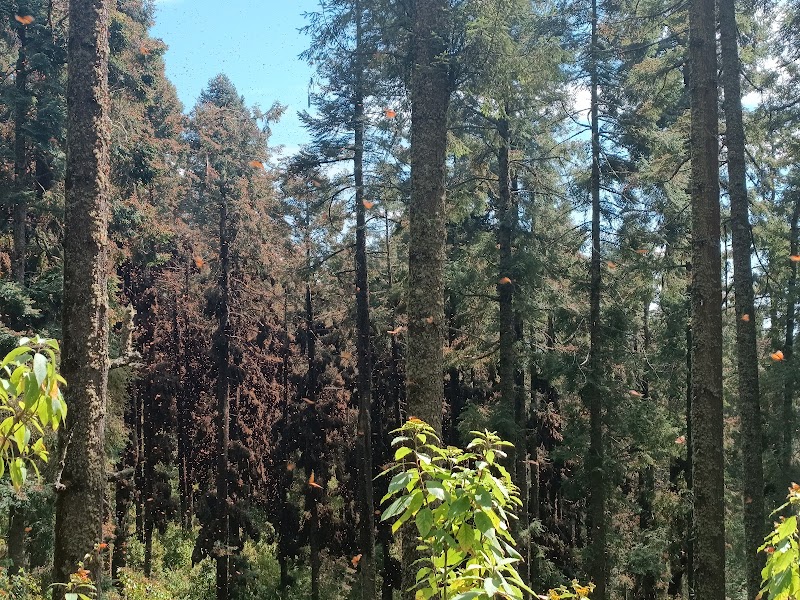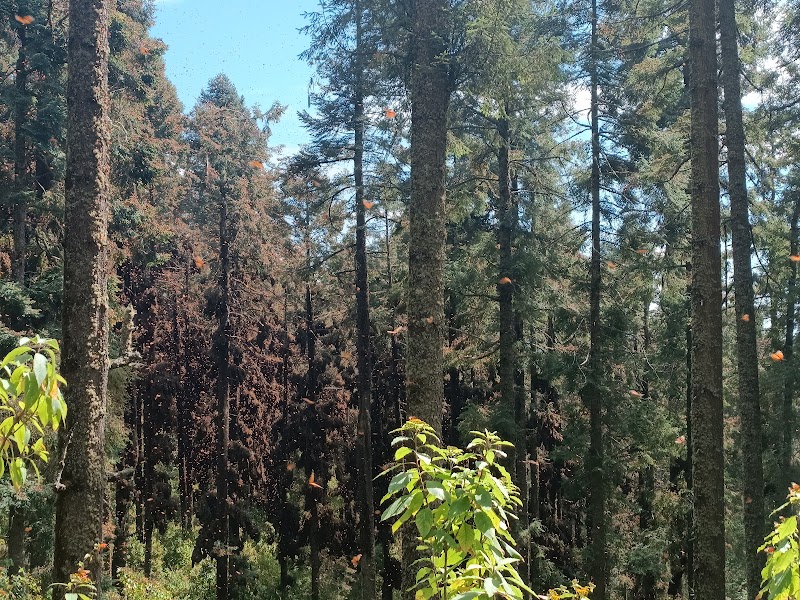Discover the Enchanting World of Monarch Butterflies
Every year, a miracle of nature unfolds in the heartland of Mexico. Millions of Monarch butterflies, having traversed over 3,000 miles from Canada, create a stunning mosaic of vibrant orange and black in the woodlands of Michoacán and the State of Mexico. This awe-inspiring spectacle, coupled with the region's breathtaking natural landscapes and rich cultural heritage, makes it a must-visit destination for nature enthusiasts and culture aficionados alike.
To help you chart out this vibrant and fascinating region, we've created an interactive "Tourist Map of London". With this valuable tool, devising your journey morphs into an exhilarating adventure rather than an intimidating task. It's the ultimate companion that ensures you discover the hidden treasures and experience the indelible.
" Booking.comUnveil the Marvels of the Monarch Butterflies in Michoacán and State of Mexico
As you embark on your journey through the core of Mexico, you'll be welcomed by a world brimming with natural wonder and enthralling history. The Monarch Butterflies in Michoacán and State of Mexico are a sight to behold, offering a unique spectacle that is both awe-inspiring and humbling. Be prepared to immerse yourself in this bewitching world of fluttering wings, lively colors, and enchanting life cycles, while exploring the lush landscapes and affluent cultural heritage of these regions.
Top Attractions in the Land of the Monarch Butterflies
- The Monarch Butterfly Biosphere Reserve
- The historic city of Morelia, the capital of Michoacán
- The Trans-Mexican Volcanic Belt pine-oak forests
- The ancient ruins of the Teotenango archaeological site
- The vibrant artisan markets of Toluca, the capital of State of Mexico
- The traditional Otomi Ceremonial Center
The Monarch Butterfly Biosphere Reserve
There's nothing quite like the spectacle of millions of Monarch butterflies filling the sky, their orange and black wings painting an unforgettable backdrop against the lush forest. This Biosphere Reserve, a UNESCO World Heritage Site, is an essential stop for nature enthusiasts. While wandering through the reserve, you'll notice the unique oyamel fir trees, which serve to create the ideal microclimate for the butterflies during their winter hibernation.
The Historic City of Morelia
Boasting its grand colonial architecture and rich cultural heritage, Morelia offers an engaging contrast to the natural splendor of the butterfly reserve. As you meander through the city's historic center, you'll be transported back in time, enveloped by the allure of its past. Don't miss the majestic Morelia Cathedral, a symbol of the city's vibrant history.
The Trans-Mexican Volcanic Belt Pine-Oak Forests
Further enhancing your tourist map of Mexico are the Trans-Mexican Volcanic Belt pine-oak forests. These forests house a diverse range of flora and fauna, providing ample opportunities for hiking, bird watching, and immersing yourself in the tranquility of nature. If you're fortunate, you might even spot a rare and endangered Monarch butterfly in its natural habitat.
The Teotenango Archaeological Site
In the State of Mexico, the Teotenango archaeological site stands as a testament to the region's rich pre-Hispanic history. Here, you can explore the remnants of a fortified city that flourished from 750 AD to 1550 AD, offering a fascinating insight into the ancient Matlatzinca civilization. The site is located on a hill with stunning views of the surrounding valley, an added bonus to the historical exploration.
The Artisan Markets of Toluca
A visit to the State of Mexico would be incomplete without exploring the bustling artisan markets of Toluca. From vibrant textiles and intricate pottery to delicious local delicacies, these markets are a treasure trove of traditional Mexican craftsmanship and culinary delights. Be sure to pick up a few souvenirs to remember your journey by.
The Traditional Otomi Ceremonial Center
The Otomi Ceremonial Center offers a unique glimpse into the spiritual practices and traditions of the indigenous Otomi people. Here, you can participate in traditional ceremonies, learn about the Otomi cosmology, and immerse yourself in the vibrant cultural tapestry of Mexico.
Whether you're a nature lover, a history enthusiast, or a cultural explorer, the Monarch butterflies of Michoacán and State of Mexico offer a journey filled with awe and wonder. So, pack your bags and get ready for an unforgettable adventure!

Practical Information for Visiting Monarch Butterflies in Michoacán and State of Mexico
Transportation and Mobility
Reaching the Monarch Butterfly Biosphere Reserve can be a journey in itself but it's well worth it. From Mexico City, you can take a bus to the city of Zitacuaro in Michoacán, and from there, local buses or taxis can take you to the reserve. Alternatively, you can rent a car for more flexibility; just remember to follow the well-marked signs to the reserve. In the State of Mexico, the reserve can be accessed from Valle de Bravo or Temascaltepec.
Schedules and Prices
The Monarch Butterfly Biosphere Reserve is open from November to March, coinciding with the migration season of the butterflies. The specific opening hours can vary but generally, the reserve is accessible from 9 am to 5 pm. Entrance fees are quite affordable, ranging from 50 to 70 Mexican pesos per person. Guided tours are available and can greatly enhance your experience by providing informed insights.
Safety Tips
Like any nature reserve, it's crucial to respect the environment and the creatures that inhabit it. Stay on designated paths, don't disturb the butterflies, and take your trash with you. It's also a good idea to wear comfortable shoes for the trek and dress in layers as temperatures can fluctuate. Don't forget to keep yourself hydrated, especially during the warmer parts of the day.
Practical Recommendations
To make the most of your visit, it's advisable to arrive early in the morning when the butterflies are most active. The reserve can get crowded, especially on weekends, so weekday visits can provide a more tranquil experience. Also, bear in mind that the reserve is at a high altitude, so pace yourself and take regular breaks if needed. Bringing binoculars can enhance your experience as it allows you to observe the butterflies without disturbing them.

Frequently Asked Questions
1. What is the best way to observe Monarch butterflies without disturbing them?
Observing with respect and caution is key to enjoying the Monarch butterflies while ensuring their well-being. Maintain a safe distance, remain quiet, and refrain from touching the butterflies or the trees where they cluster. It's a magical experience to watch them fluttering around, so bring your binoculars for a closer look.
2. How can I contribute to the conservation of the Monarch butterflies during my visit?
Supporting local communities is an effective way to contribute to the conservation efforts. Opt for local guides, dine at community-run restaurants, and purchase souvenirs from local artisans. Additionally, adhere to all guidelines and rules provided by the reserve to ensure the butterflies' habitat remains undisturbed.
3. Are there specific times when the Monarch butterflies are more active?
Monarch butterflies are more active during the warmer parts of the day, typically from late morning until early afternoon. During these hours, you're more likely to see them flying, feeding, and interacting. Remember, the temperature can drop swiftly in the evenings, so plan your visit accordingly.
4. Can I take photographs or videos of the Monarch butterflies?
Yes, you're permitted to capture the stunning spectacle of the Monarch butterflies, but do so responsibly. Use only silent, non-flash photography and avoid disturbing the butterflies or their habitat. Always prioritize the well-being of these delicate creatures over getting the perfect shot.
5. What types of plants and trees can I see in the Monarch butterfly reserves?
The reserves boast a variety of indigenous flora, including oyamel fir trees and pine-oak forests. These trees play a critical role in providing the butterflies with a suitable microclimate for their winter hibernation. You might also spot wildflowers and milkweed, the primary food source for Monarch caterpillars.
6. Are there other wildlife species to watch out for in the reserves?
Besides the Monarch butterflies, the reserves harbor a range of wildlife. Be on the lookout for white-tailed deer, coyotes, rabbits, and various bird species. Always remember to observe from a distance and never approach or feed the animals.


